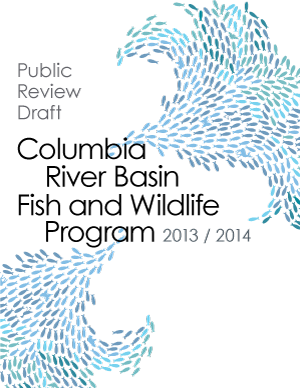The public weighs in on draft fish and wildlife program
- June 20, 2014
- John Harrison

The future management of fish hatcheries, reintroduction of salmon and steelhead above Chief Joseph and Grand Coulee dams, and the cost of fish and wildlife mitigation are attracting the most attention from the public as the Council nears completion of its public comment period on the Draft 2014 Columbia River Basin Fish and Wildlife Program.
Ten public hearings were scheduled in cities around the Northwest to take comments on the draft program, which the Council approved in May. The comment period has been extended to July 25. Among the most frequent comments at the hearings through the June Council meeting in Missoula were these:
- Indian tribes that operate salmon and steelhead hatcheries believe recommendations in the draft program to incorporate certain guidelines of the Hatchery Scientific Review Group in developing hatchery genetic management plans would severely limit the number of hatchery fish released into the wild and thus harm efforts to rebuild fish populations. The HSRG recommendations are intended to protect wild fish, but the tribes have argued that hatchery production is necessary to support the rebuilding of runs that spawn in the wild. The draft program does not impose the HSRG guidelines but asks the managers to explain why they would not use them if they choose not to.
- Electric utilities have commented that the Council is not the right agency to investigate the feasibility of reintroducing salmon and steelhead into areas above Chief Joseph and Grand Coulee dams, which block their passage. The utilities argue that is a matter to be considered by the United States and Canada under the Columbia River Treaty. Utilities also have commented that the Council needs to control costs of the program, which are paid by electricity customers of utilities that buy power from the Bonneville Power Administration.
The draft program is posted on the Council’s website, along with a list of the public hearings and instructions on how to comment.


